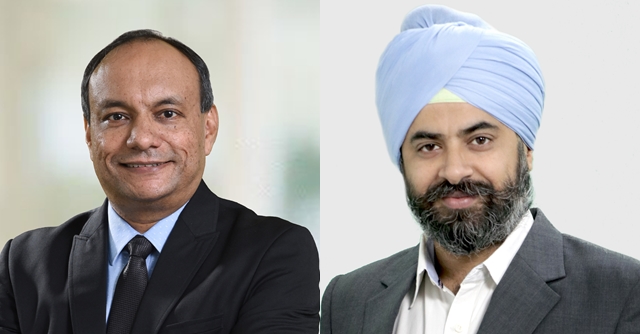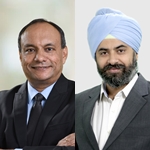
In praise of frugal engineering


ISRO's feat with Chandrayaan-3, executed on a shoestring budget of ₹615 crore ($75 million), has deservedly brought global attention to its frugal approach to engineering. India’s moonshot turned out to be powered by an ambitious yet cost-conscious team willing to take calculated risks, squeeze value out of resources, and indigenize critical components at every stage. ISRO’s many successes with space exploration suggest that these extraordinary wins are not because of luck or chance, but the consequence of merit and method. What lessons, therefore, are on offer for companies that routinely spend orders of magnitude more money to build and operate their technology platforms?
Some years ago, when Facebook (now Meta) acquired WhatsApp for an eye-popping $19 billion, it was revealed that WhatsApp was servicing many hundreds of millions of users everyday across the world, glitch free, with a lean team of just 50 engineers. This was a shock-and-awe moment for the tech industry; no one could quite comprehend how WhatsApp had scaled such peaks of unprecedented productivity. Co-founder Brian Acton even suggested (in a meeting where one of us was present) that he considered it his responsibility as CTO to preserve the platform’s pristine simplicity, by zealously protecting it from the encroachment of ‘unnecessary’ or ‘frivolous’ new features. In a world that worships engineers who give birth to new features, here was a celebrated engineer promoting abstinence as a virtue!
Frugal engineering is not the same as jugaad, a term excessively glorified in recent years. There is nothing adhoc about frugal engineering. Instead, it is a methodical and thoughtful way of challenging conventional wisdom, embracing hard constraints, and designing elegant and durable solutions for complex problems using the least amount of resources. It is the engineering equivalent of ‘less is more’. Drawing from our own experience of developing iPearl.ai (a digital learning platform) using frugal engineering, we have identified five principles that can be used to guide the development of sophisticated technology platforms that are at once economical, elegant, and efficient.
First, continuous engineering is another name for non-stop software development. In other words, a software system must always be live and operational, even when it has minimal features, and must forever remain a work-in-progress as it accumulates useful functionality over time. The boundaries between design and development phases are fluid, which means accelerated development and midstream adaptations are always possible and considered normal. For iPearl.ai, we embraced an open architecture that enabled us to continually evaluate and integrate new components, including open source, commercial off-the-shelf, and build options. This allowed us to design, build, and operate a sophisticated digital learning platform that has kept evolving seamlessly over a decade in line with the changing needs of learners and instructors.
Second, minimalist design is the advocacy of extreme simplicity in design decisions. Most commercial software systems suffer from high feature bloat; in fact, research indicates that approximately 80% of software product features are never (or rarely ever) used. That is a tremendous waste. Embracing Dieter Rams' principle that good design involves as little design as possible can lead to significant benefits. Here too, iPearl.ai gains in terms of user familiarity by riding on Open edX as its underlying learning management framework. Instead of reinventing the wheel, building on top of popular, pre-existing frameworks can save valuable resources, maximize user delight, and minimize cognitive dissonance.
Third, cost-effective development implies that budgetary constraints must be treated at par with user experience. iPearl.ai took 150,000 person hours to develop using open source and off-the-shelf components, only a fraction of what it would have cost if we had built it from scratch. Achieving frugality entails a solid understanding of business and the viability of available technology solutions in order to make informed decisions on when to build, buy, or go open source. For instance, bread-and-butter functionality such as video conferencing, integrating commercial off-the-shelf components directly may be the optimal choice; in contrast, a more deliberate strategy may be required for unconventional requirements such as placement support or alumni engagement. Success lies in finding perfect tradeoffs between viability and value.

Fourth, a low cost of ownership is the hallmark of frugal engineering; not only should the platform be inexpensive to produce, it should also be easy to maintain. In the case of iPearl.ai, we set an upfront goal that the cost of operating the platform should not exceed $1 per user per month. Setting such an ambitious and sharp goal forced our technical teams to innovate in ways they would never have done otherwise. In the end, in addition to realizing the cost of ownership targets, lots of IP was created, and patent applications filed. With regard to talent, a young, multi-skilled, high energy team of fresh software engineers from non-premium institutions were selected, trained, and groomed to manage ongoing technical operations. Even our choice of a cloud service provider reflected our willingness to make important tradeoffs that led us to save 80% on our infrastructure costs while giving up only 20% of functionality.
Finally, future-proofing is the idea that a well-built system must endure for decades, as long as there are continuous upgrades and timely retirement of outdated components. Like financial debt, tech companies are grappling with rising ‘technical debt’, a concept that includes issues from bug fixes to legacy code to missing documentation. For being agile and relevant, open source systems designed for scalability and sustainability can prove to be invaluable. Over the years, we ensured that iPearl.ai evolves in a lock-step manner along with newer versions of open source and other components.
The modern CTO must be like Janus, the Roman god with two faces facing in two different directions. At times a dreamy CTO focused on producing world-class software, and at other times a bargain-hunting CFO bent on keeping the costs down, the results are best when one is able to strike a fine balance between the competing pulls of technical ingenuity on the one hand and financial austerity on the other.

Santanu Paul and Jitendra Singh
Santanu Paul and Jitendra Singh are CEO and CTO respectively of TalentSprint.
